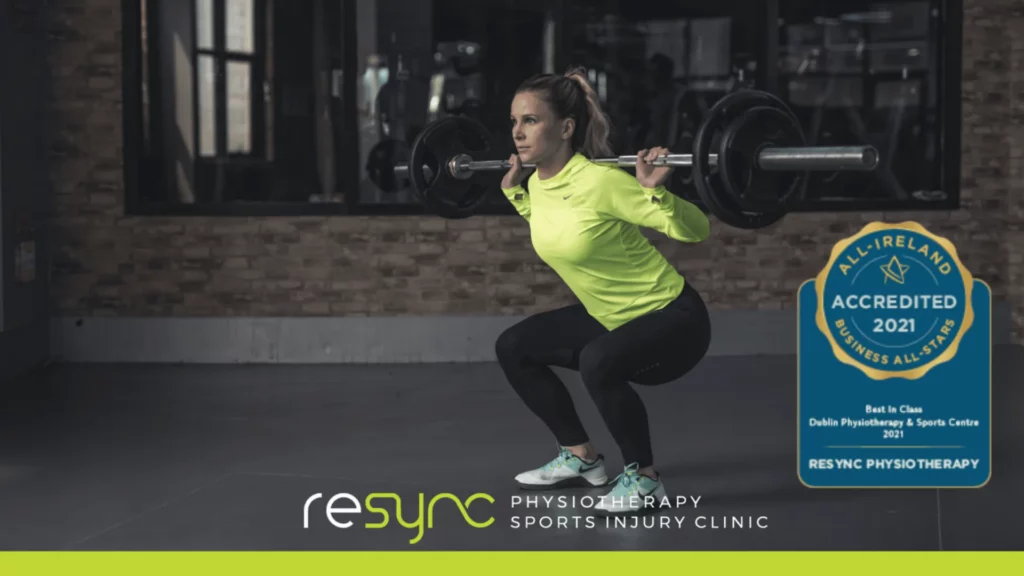3 Alternative Exercises to Squatting for Athletes
Hip pain when squatting can be a very worrying injury. It gradually increases and people may start to think the worse if they begin to have HIP PAIN AT NIGHT
Hip Pain when Squatting : 3 Alternative Exercises to Squatting for Hip Strength.
Hip strength and mobility is essential for many daily activities like getting up from the chair, playing with the kids, or simply walking up the stairs.
The hip musculature also plays an important role in human performance for athletes like runners and field sports players.
The main role of the hip muscles, primarily the glutes, is to provide hip extension during gait (walking and running) and to provide dynamic stability when on one leg.
The glutes are assisted by the hamstrings and adductors (groin) to distribute power from the ground to propel us forwards during gait.
Developing good hip strength plays a vital role in reducing the risk of back pain and other movement related injuries.
This blog aims to give you 3 alternative exercises to the back squat that you can do to strengthen the hips and reduce your risk of injury.
While the squat is a staple exercise in many programs, when done incorrectly it can lead to discomfort in the lower back and hips.
Hip Pain Squatting: The Hip Thrust.
The hip thrust is a great alternative exercise for the squat to target the hip extensor muscles, mainly the glutes and hamstrings.
The hip thrust is designed to improve your strength and power by optimizing hip extension.
Why is hip extension so important? The glutes are among the most powerful in the body and they are designed to extend the hip or bull the leg behind the body.
Barbell Hip Thrust Position.
How to perform:
- The hip thrust can be performed from the floor or with the back rested on a bench/box like the picture above.
- There are many variations of the hip thrust but here we will focus on the barbell thrust.
- Rest your shoulders on a box or bench that is between 12 and 16 inches in height.
- To start with placing some larger lighter weights (5kg plates) on the barbell on both sides (this allows the bar to rest easier on the front of the hips).
- The barbell should go directly on your upper thigh with a towel or soft pad between your hips and the barbell.
- Rest the middle part of your back ( just below the shoulder blades) across the edge of the box/ bench.
- You are ready to perform the 1st rep by thrusting your hips and barbell towards the ceiling. Push through the heels.
See demo video here: youtube link Resync
Tips:
- Ensure a vertical shin angle by placing the feet directly under the knees.
- Tuck the chin to maintain neutral alignment.
- When you fully extend up into the lift the knees should make a 90 degree angle with the ground.
- Engage your glutes and core muscles throughout the lift.
Some common mistakes:
- Not getting full range of motion or stopping short of thighs parallel.
- Placing the feet too far in front, or heels come off the ground
- Overextending the lower back at the top of the lift and not maintaining a neutral spine.
- Jerking the weight off the floor too fast.
Hip Pain Squatting : The Barbell Step Up.
Step ups onto a box/bench are a great way of using hip extensor muscles as well as creating dynamic stability of the hips on one leg.
When it comes to a functional lower body exercise, step ups are one of your best options as it targets the hip extensors as well as the quadriceps. They bring the focus to any strength imbalances between both legs.
How to perform:
- Use a box that is the same height or slightly lower than your knees.
- Take the barbell from the rack by lifting it off as it rests on your shoulders.
- Beginners should use an empty barbell with no extra plates.
- Place one foot up onto the box and push the foot down into the box to step up.
- When you reach the top, tense your glute on the stance leg as well as engaging the core muscles.
- Lower the other leg to initiate lowering the body back to the start position slowly
- Perform all of the desired reps on that leg before switching to work the other leg.
Tips
- Maintain a tall posture and neutral alignment of the pelvis.
- Pre-tension the core and hips before you step up
- Drive through the ball of your foot as you come up.
- If you find the barbell too awkward on your back, start with the dumbbells variation.
Hip Pain Squatting: Cable Hinge Pull through
- Adductor magnus
- Hamstrings hip extensors
- Glute max
- Glute med/min / DHR
- Quads
- Pelvic/ apt

